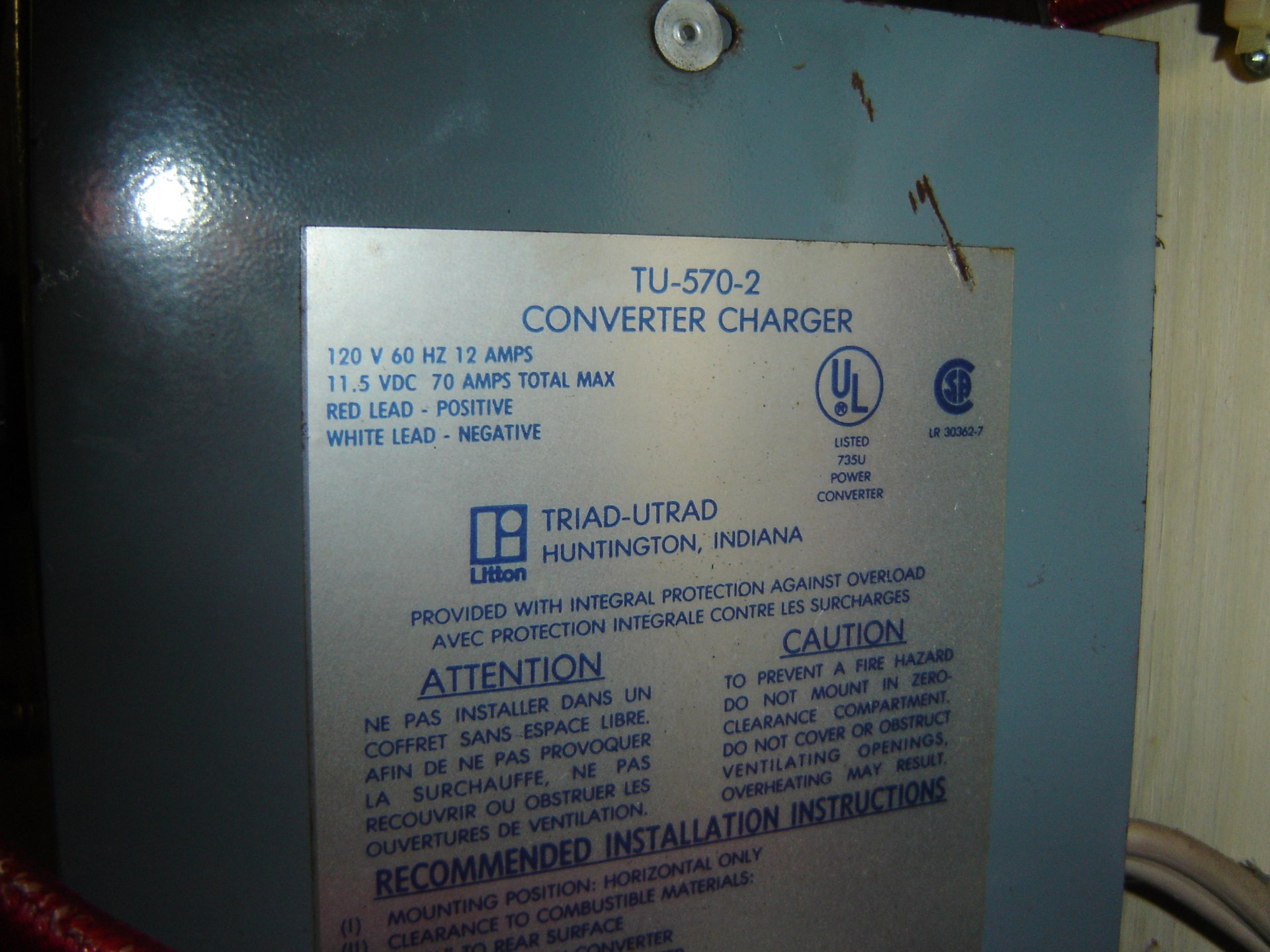A boat with multiple banks of batteries (like Red Ranger) has a margin of safety. One dead battery is not a terribly big problem.
However.
Charging multiple banks of batteries is where the challenge arises. If all the batteries are connected together, and all have the same chemistry and the same level of charge, there's no problem. If one bank of batteries has been heavily discharged — by, say, making several tries to start the engine — then connecting two banks together will discharge one into the other.
There are three standard solutions to this multi-battery problem.
-
Diodes. Current flows in one direction only: to the battery, not between the batteries. Solid-state, reliable and simple. But. It eats voltage, making battery charging inefficient.
-
Transistors. Current flows in one direction only. It eats less voltage, making battery charging less inefficient.
-
Relays. A voltage sensor assures that the batteries are only connected in parallel by the relay when they are being charged. This prevents one battery from discharging the other. This requires a manual override to force the batteries in parallel when, say, one bank is weak from making several tries to start the engine.
We have diodes. Once upon a time, they were the gold standard. But now, the automatic relays are preferred.
Out of Control
Researching relays to replace the diode has lead to a number of interesting side-issues.
-
The battery parallel switch that we have is less than ideal. It's a 1-2-Both-Off switch. Newer switches are "On-Off-Parallel" which makes more sense: switch to parallel when both batteries are needed to start the engine. Otherwise, leave it on.
-
The battery charger is an ancient Triad-Utrad 70A charger. Utterly inefficient. We need a new 60-80A charger with multi-stage charging. For this to be completely effective, we have to replace the engine battery with a big Group 27 wet cell battery (1,000 CCA) so we can have consistent battery chemistry.
-
Our two little inverters won't properly charge the computers. We don't know why. A MacBook Pro adapter is 85W. Our Kensington K38037US inverter is 120W. Our Cobra CPI 200 CH inverter is 200W. Yet. The computer doesn't charge properly. Maybe we need a proper pure sine wave inverter.
The research has spun out of control. There are numerous ways to tackle our various electrical problems.
We have a hand-me-down Xantrex Trace Freedom 3000 on the boat. It's a huge (and sophisticated) animal. And perhaps more than we need.
I think we want something smaller. More like a Charles Marine C-Charger 5000 SP 60A. To this we can add a small 1000W GoPower Pure Sine inverter.
Currently, we've got something like this that needs a few changes. At some point, we need to stop researching and start doing.




